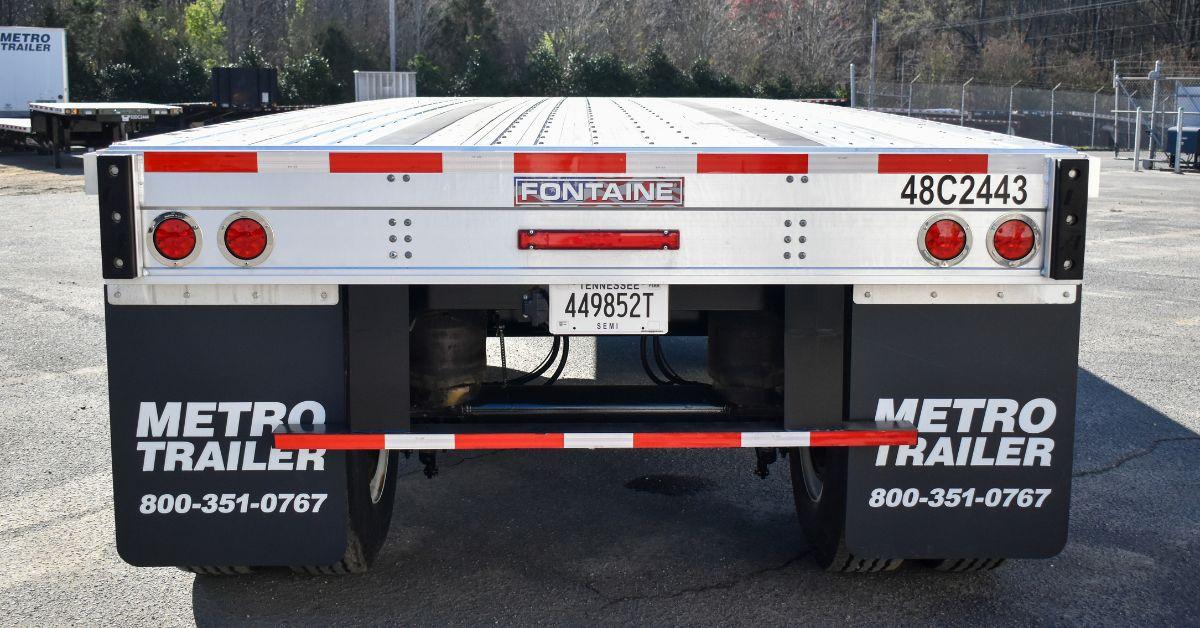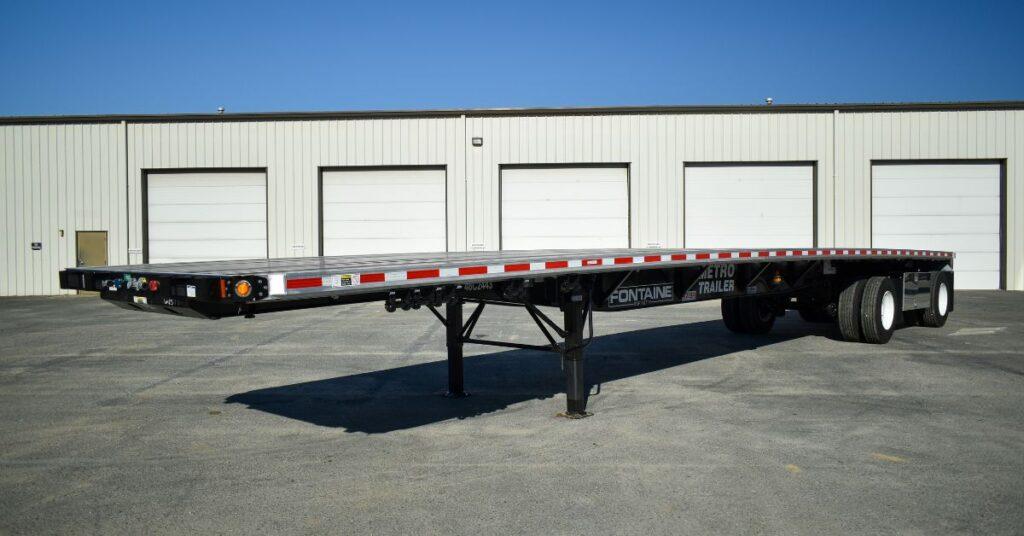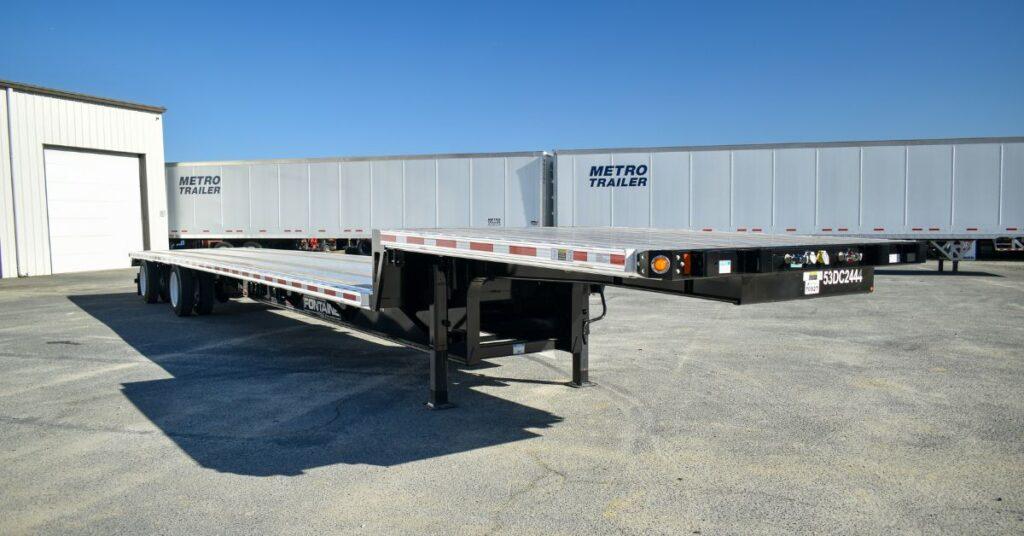
A Complete Guide to Shipping on Flatbed Trailers
Shipping oversized or unconventional goods comes with its own set of challenges, but flatbed trailers simplify the process like no other option. These open-deck workhorses of the transport industry handle everything from heavy machinery to building materials and specialty cargo. Their unmatched flexibility makes them a go-to solution for businesses that need to move items that just don’t fit within the confines of traditional trailers.
Flatbed trailers aren’t just a tool for freight—they’re a necessity for industries that rely on the safe, efficient transit of large and irregular loads. Whether you’re dealing with steel beams, farming equipment, or wind turbine components, these trailers offer unmatched efficiency and adaptability.
This guide dives into everything you need to know about shipping with flatbed trailers. We’ll break down the goods they handle, the benefits they offer, and the steps to make the most of their capabilities. It’s all about simplifying the process while helping you to choose the trailer that best fits your needs.
Types of Goods Commonly Shipped on Flatbed Trailers
What kind of cargo do you need to move?
Heavy Machinery and Equipment
Flatbed trailers are a top choice for transporting oversized equipment like bulldozers, tractors, and industrial machines. Their open design accommodates items with unusual shapes or sizes, allowing businesses to move machinery without disassembling heavy components.
Building Materials
Items such as steel beams, lumber, and concrete pipes are frequently moved using flatbed trailers. These materials often come in long or bulky shapes that wouldn’t fit inside a standard trailer. Flatbeds allow for easy side, rear, or even crane-accessible loading, which speeds up transport for construction projects.
Vehicles and Large Components
Shipping vehicles like boats, RVs, and even aviation parts is made simpler with flatbed trailers. These trailers adapt to holding large loads and have specific equipment to prevent movement during transit, such as straps and tie-downs.
Miscellaneous Oversized or Specialty Cargo
Flatbed trailers also excel at handling unique items like sculptures, wind turbine blades, or prefabricated homes. Oversized or irregularly sized goods that can’t fit inside enclosed trailers benefit from the freedom flatbeds provide.
Benefits of Shipping on Flatbed Trailers
What kinds of perks can you expect when you use a flatbed trailer for rent to ship your goods?
Flexibility in Cargo Size and Shape
Flatbed trailers handle goods of nearly any size or dimension. With no limitations caused by walls or roofs, loads like construction beams or agricultural machinery fit securely, regardless of height or width.
Ease of Loading and Unloading
On a flatbed trailer, workers can access cargo from every angle. Cranes can lift objects straight onto the deck, while forklifts can approach from the sides. This efficiency reduces downtime and ensures that shipments reach their destination more quickly.
Ability To Handle Oversized and Overweight Loads
Flatbeds are specifically built to carry extreme weights and oversized dimensions. Hauling equipment like excavation machinery or massive shipping containers requires durable platforms and secure tie-downs, which flatbeds provide in abundance.
Highly Versatile Transport Option
Flatbed trailers are suitable for a wide range of industries, from agriculture to energy. Their adaptability makes them equally effective for short local hauls or cross-country transport. Businesses often consider them an all-purpose solution for tackling diverse logistical challenges.

Safety Considerations for Flatbed Trailer Shipping
Make sure your cargo doesn’t fly off the flatbed! Consider these safety concerns as you prepare to ship.
Securing the Load Properly
Heavy-duty chains, straps, and tarps are commonly used to prevent goods from shifting or falling during transit. Properly balancing the weight across the trailer also reduces risks, such as tipping or excess strain on the vehicle.
Weather and Environmental Challenges
Rain, snow, or extreme winds can damage exposed cargo on a flatbed. Protective coverings such as tarps or weatherproof materials safeguard loads against the elements.
Training and Experience for Safe Hauling
Drivers handling flatbed shipments need the right training. Awareness of safety protocols, load limits, and emergency procedures ensures smooth transport. When moving valuable or oversized cargo, experienced operators minimize risks to both the freight and the trailer.
Loading and Unloading Procedures
Don’t just throw your cargo onto the flatbed. Take the time to do it right.
Using Proper Equipment
Successfully loading or unloading on flatbeds requires equipment like forklifts, cranes, or pallet jacks. By matching the tool to the cargo, workers can avoid unnecessary delays or damage to goods.
Efficient Workflow for Faster Turnaround
Organizing the loading sequence saves time and boosts efficiency. Lay out cargo for quick access or pre-plan weight distribution to prevent delays.
Communication Between Teams
Smooth operations depend on clear coordination between drivers, loaders, and site managers. With everyone on the same page, you minimize potential confusion, which helps to avoid accidents or wasted time during transitions.
Regulations and Permits Required for Flatbed Shipping
You’ll need to comply with several rules and regulations when you ship on a flatbed. Keep these in mind!
Oversized and Overweight Load Permits
Shipping items beyond standard size or weight limits often requires special permits. Depending on the route and destination, businesses need to apply for these permits ahead of time to avoid penalties or shipment delays.
State and Federal Regulations
Compliance with trucking laws ensures that your flatbed shipment proceeds smoothly across highways and state lines. Each state may have unique rules governing weight and dimensions.
Safety Compliance and Inspections
Regular inspections by relevant authorities confirm that vehicles and cargo meet legal requirements. Non-compliance can lead to delays or fines.

Tips for Choosing the Right Flatbed Trailer
Which trailer will transport your load most efficiently?
Consider the Type of Cargo
Choosing a flatbed trailer hinges on the nature of your shipment. For delicate goods or heavy equipment, matching the trailer’s design to the cargo ensures better safety and handling throughout the trip.
Evaluate Trailer Features
Special features like extendable platforms, side kits, or removable goosenecks may add value when shipping oversized loads. These options maximize the trailer’s usability based on shipping needs without creating limitations.
Factor in Distance and Haul Requirements
Shipping over long distances demands trailers built for the task. Assess haul length and weight capacity to prevent breakdowns or delays along the route.
Ship with Confidence!
The flexibility and efficiency that flatbed trailers offer open up countless possibilities for transporting everything from industrial machinery to custom oversized cargo. But beyond the practicality, staying ahead in this industry means keeping an eye on new tools, technologies, and practices. Innovations like advanced securing systems or enhanced trailer designs continue to make shipping safer and faster.
Exploring flatbed trailer options tailored to your business or project can also give you a competitive edge. By following this guide, choosing the right trailer, and staying informed about industry updates, you’re setting yourself up for greater success with each shipment.
If you’re ready to simplify your transport challenges or discover what flatbed shipping can do for you, reach out to Metro Trailer Leasing today. The right solutions are just a flatbed away.